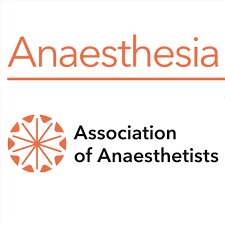New guidelines address critical airway challenges in obese surgical patients

Editor's Note A multidisciplinary expert panel has released the first evidence-based airway management guidelines specific to patients living with obesity. Published June 5 in Anaesthesia, the 43-point framework—developed by the Society of Obesity and Bariatric Anaesthesia (SOBA)—offers perioperative strategies aimed at improving the safety and consistency of care in a…
New GLP-1 guidance urges longer fasting before anesthesia

Editor's Note Patients taking GLP-1 receptor agonists (GLP-1 RAs) do not need to discontinue these medications before undergoing anesthesia but should follow extended preoperative fasting protocols to reduce aspiration risk, according to a June 5 article in Medscape. As detailed in the article, this recommendation comes from a new multidisciplinary…
Perioperative care for transgender patients demands specialized, affirming, informed practice, experts say

Editor's Note New clinical guidelines emphasize that safe and equitable perioperative care for transgender and gender-diverse (TGD) patients hinges on affirming communication, tailored medical assessments, and culturally competent practice. According to a peer-reviewed article published in the June issue of Nursing, perioperative teams must adopt evidence-based, inclusive approaches to better…
Study: Fewer men undergo unnecessary prostate cancer surgery amid rise in active surveillance

Editor's Note Prostate cancer surgeries for low-risk patients have plummeted since 2010, signaling major progress in reducing overtreatment, according to an April 29 announcement from the University of Michigan. University researchers reportedly found that the proportion of men undergoing prostatectomy for Grade Group 1 prostate cancer—the lowest-risk category—dropped more than…
Preadmission clinics drive better surgical outcomes, lower costs, fewer cancellations

Editor's Note Preadmission clinics (PACs) are supporting perioperative care by reducing complications, shortening hospital stays, and improving surgical outcomes—particularly for high-risk patients. As detailed in the April 2025 edition of ASA Monitor from the American Society of Anesthesiologists (ASA), PACs operate as multidisciplinary outpatient hubs where medical optimization, risk assessment,…
Subarachnoid spinal anesthesia offers safe, effective option for high-risk obstetric patients

Editor's Note Segmental spinal anesthesia (SSA) has emerged as a safe and effective anesthetic technique for high-risk obstetric patients, particularly those with underlying cardiovascular disease (CVD). A recent case series published on April 29 by Medical Dialogues highlights the successful use of SSA in five parturients undergoing cesarean sections, emphasizing…
Personalized perioperative pain management reduces opioid use

Editor's Note Helping patients taper opioids preoperatively before deploying multimodal care strategies can help prevent instances of patients already with prescriptions going home with even higher doses. That’s the main takeaway from an April 22 MedCentral interview with Marie N. Hanna, MD, division chief for regional anesthesia and acute pain…
Communications skills keep surgical patients engaged, informed

Editor's Note An April 16 article in JAMA Network outlines a three-part communications framework for improving the quality and clarity of perioperative conversations with patients, particularly when time is limited and stakes are high. The article focuses particularly on three core communications skills: attending to emotion, managing uncertainty, and supporting…
Study: CT scan radiation could drive 5% of future cancer cases

Editor's Note Current US CT scan practices could lead to approximately 103,000 future cancers—nearly 5% of all new annual diagnoses—if utilization and radiation dosing patterns persist, according to a risk modeling study published April 14 in JAMA Internal Medicine. Authors emphasized that although CT is often lifesaving, its risks are…
Bye-bye, SSI: Nurse-led decolonization protocol pays off

Imagine completely eliminating surgical site infections (SSIs) without significantly disrupting perioperative workflows. At Magic Valley Regional Medical Center (MVMC), a mid-sized community hospital in Twin Falls, Idaho, a nurse-led pilot project accomplished just that for breast and colorectal surgeries. As for other procedures, overall infection rates are down by nearly…

 Free Daily News
Free Daily News